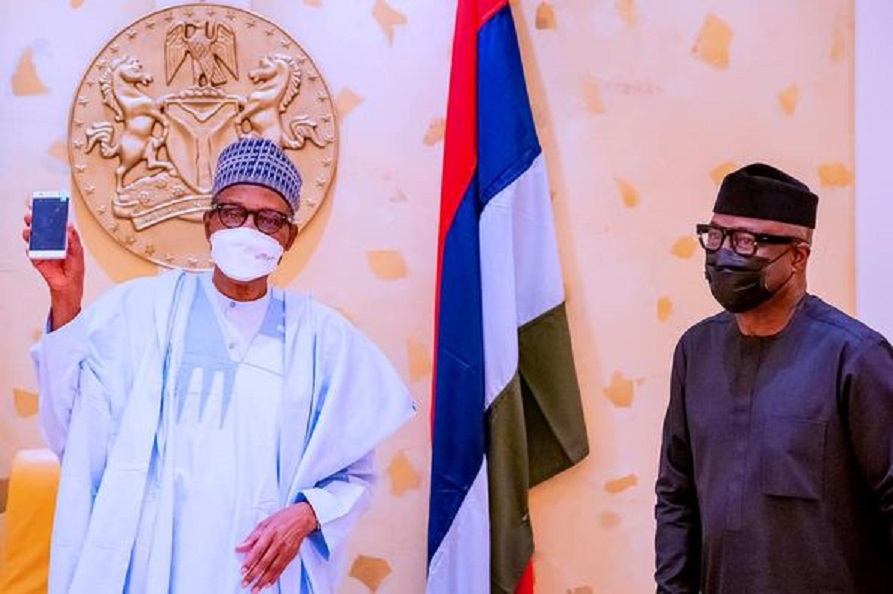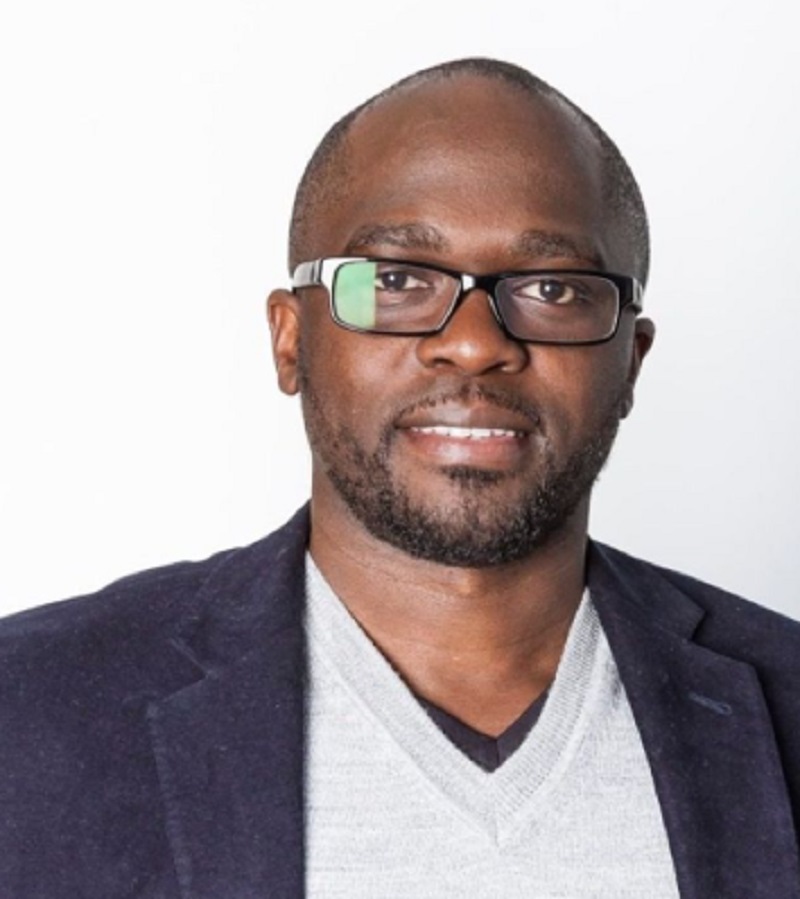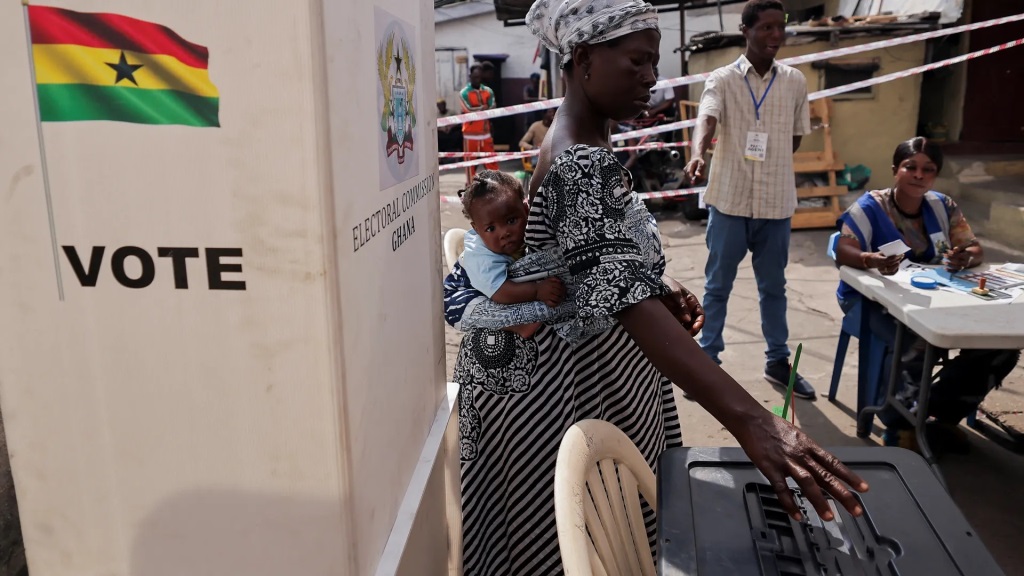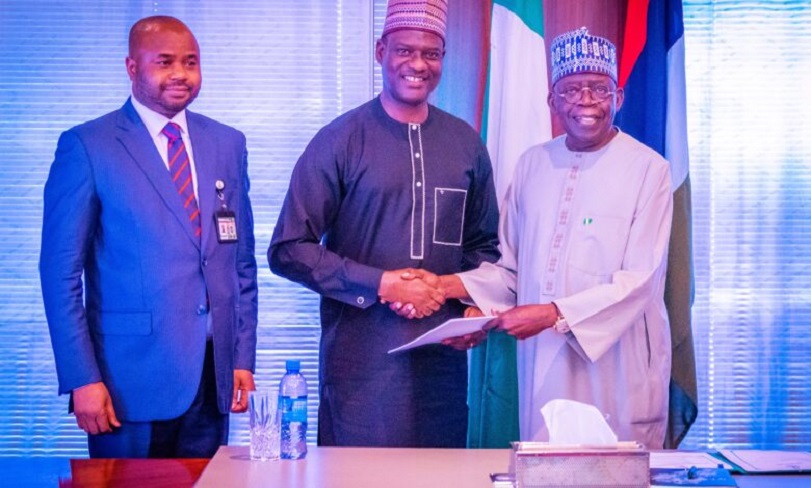Feature/OPED
Africa and the Challenge of Development

By Jerome-Mario Utomi
It is no longer news that recently, the Director-General of the Industrial Training Fund (ITF), Sir Joseph N. Ari, officially presented the ITF Mobile Android GSM smartphone to President Muhammadu Buhari at the Presidential Villa, Abuja.
The DG said at the presentation that the ITF mobile phone, which was comparable in quality to any other brand of Android phone in the world, was assembled by the ITF Model Skills Training Centre (MSTC), Abuja, as part of the implementation of the vision of the incumbent management of the ITF with particular emphasis on research and development.
The phone was produced with 100 per cent locally sourced material. It is proof that given the enabling environment and opportunities, Nigerians will unleash their creative potentials.
Definitely a cheerful development, but such joy easily gets abbreviated when one remembers that the shadows still linger of similar feeble attempts in the past which ended in shame.
There exists also new awareness that this challenge is by no means unique to Nigeria as a country but cuts across Africa. Ringing apprehension is that the continent is the second most populated in the world (1.2 billion people), yet, sadly represents only 1.4 per cent of the world manufacturing value-added in the first quarter of 2020.
This is further exacerbated by the fact that out of over 51 countries in Africa as a continent, only South Africa qualified as a member of BRICS, an acronym coined for an association of five major emerging national economies: Brazil, Russia, India, China and South Africa.
This worrying concern about how offtrack Africa has gone in all facets of technological development and advancement recently came flooding during a conversation with C.N Oragwu, a former university academic in Physics, at his Lagos residence.
Aside from the fact that the conversion stems from both the title and partially formed the content of this piece, he (the host) during the conversation critically highlighted how his new book entitled; technology and wealth of nations, which is set for presentation to the public in July 2021, chronicled the slanted and unsustainable effort different African governments made in the past to bring their nations out of technological woods, as well as outlined the way forward.
There is also another distinction to make.
Similar to the construction of any business strategy, where it is acknowledged that three main players must be taken into account; the corporation itself, the customers and the competition-as each of these ‘strategic 3C’s which form the strategic triangle is a living entity with its own interests and objectives; but must be taken care of by any organization desirous of survival, likewise, the book is evident with some strategic antidotes that signals solutions to Africa’s hydra-headed and multi-faceted technological challenge. A fact that more than anything else qualifies it a must-read for policymakers in Nigeria and Africa as a continent.
The above is not the only explanation as he went ahead to make a further distinction.
Separate from thoughtfully and masterfully examining the inspirable relationship between technological development and economic progress of nations, the book, deftly argues with facts that the point of the sail of all economies is the introduction of the manufacturing sector or the industrial economy.
He establishes that Africa’s prolonged economic plight is centred on the two fundamental challenges of a manufacturing economy.
It traces Africa’s economic backwardness to its roots – a key problem that has kept our policymakers handicapped and our economies crippled.
With documented facts on the institutionalized crippling policies and organized sequences of stagnating events of the colonial masters, the author asks: why is it that Europe, which hosted the industrial revolutions in the 17th and 18th centuries, did not permit technological education in Africa in about 50 years of colonization, and prefers to send aids afterwards?
Of course, the above question in my view may not be lacking in merit considering the fact that Africa presently is dotted with projects built with aids from Europe, the United States of America (USA) and lately, China.
For a better understanding of this piece, let’s take a look at the Chinese development aid to Africa.
Going by reports, Chinese development aid to Africa totalled 47 per cent of its total foreign assistance in 2009 alone, and from 2000 to 2012 it funded 1,666 official assistance projects in 51 African countries. Also, the Brookings Institution Aid Data study found that at least 70 per cent of China’s overseas aid was sent to Africa from 2000 to 2014.
Some of these projects include but not limited to; the African Union building in Addis Ababa, Ethiopia, which cost $200 million to build and was handed over in 2012. Recently also, China announced its willingness to give the Economic Community of West African States (ECOWAS), a $31.6 million grant to build a new headquarters in Abuja, Nigeria.
China’s scarves have found their largest African market in Egypt, which imported supplies worth $45 million in 2014. The nations also have a healthy exchange of carpets, with multi-million dollar supplies travelling in both directions. – Dozens of African hospitals have been built with Chinese funds in recent years. China’s largest commitments in Africa are to infrastructure projects, such as Nigeria’s $8.3 billion Lagos-Kano rail line, largely funded through Chinese loans.
Whatever the true situation may be, I believed and still believe that there exists something troubling technologically that characterizes Africa more as a dark continent.
More so, looking at the current happenings and commentaries within the continent, it is obvious that fair-minded and well-foresighted Africans are in support of the position as conversed by the book. In fact, many have at different times and places argued that though Africans may have overtly shown remarkable improvement in their culture and civilization.
That notwithstanding, the fact that after almost 60 years of independence, African countries continually look up to China for aid, covertly tells a story of a continent lacking in capacity for taking responsibility for its actions and initiatives for values.
On the way out of the continent’s technological debacle and the current wealth disparity among nations (industrial and industrial economies), let’s again cast a glance at what the book is saying.
It (the book) argues that the current wealth disparity among nations (industrial and industrial economies) represented by highly industrialized Europe, North America and Japan on one hand and most developing (non-industrial economies) countries, in particular, those in sub-Saharan Africa, on the order is primarily the difference in the technical capability and capacity to produce and manufacture modern technologies and to use the technologies to produce and manufacture globally competitive industrial goods and to sustain the commanding tasks of science and technology in the economy
The disparity it added, has since considerably widened and will continue to widen as long as the developing countries depend almost totally on industrial nations for the technologies and industrial inputs they need to sustain their economies.
Consequently, the only way to bridge the wealth gap is for the developing countries of the world to build their domestic endogenous capabilities and capacities to produce modern technologies and competitive industrial goods in their own economies, he concluded.
Catalysing the process will again necessitate African leaders borrowing bodies from Asian tigers in order to raise Africa’s industrial soul. They need to analyse and understand the essential ingredients of foresight in leadership and draw a lesson on how leadership decision-making processes involve judgment about uncertain elements and differ from the pure mathematical probability process. To find out why Asia after grappling with the problems of unemployment in the region, their leaders came to the conclusion that the only way to survive was to industrialize.
Finally, Sir Joseph N. Ari may be right in his claim that in terms of quality and performance, our phone is comparable or even superior to most Android phones currently in our markets, however, it important to underline that for us to succeed, there are certainly an infused lesson policymakers in Nigeria/Africa must draw from the above explanations.
Jerome-Mario Utomi is the Programme Coordinator (Media and Public Policy), Social and Economic Justice Advocacy (SEJA), Lagos. He could be reached via [email protected]/08032725374.
Feature/OPED
The Future of Payments: Key Trends to Watch in 2025

By Luke Kyohere
The global payments landscape is undergoing a rapid transformation. New technologies coupled with the rising demand for seamless, secure, and efficient transactions has spurred on an exciting new era of innovation and growth. With 2025 fast approaching, here are important trends that will shape the future of payments:
1. The rise of real-time payments
Until recently, real-time payments have been used in Africa for cross-border mobile money payments, but less so for traditional payments. We are seeing companies like Mastercard investing in this area, as well as central banks in Africa putting focus on this.
2. Cashless payments will increase
In 2025, we will see the continued acceleration of cashless payments across Africa. B2B payments in particular will also increase. Digital payments began between individuals but are now becoming commonplace for larger corporate transactions.
3. Digital currency will hit mainstream
In the cryptocurrency space, we will see an increase in the use of stablecoins like United States Digital Currency (USDC) and Tether (USDT) which are linked to US dollars. These will come to replace traditional cryptocurrencies as their price point is more stable. This year, many countries will begin preparing for Central Bank Digital Currencies (CBDCs), government-backed digital currencies which use blockchain.
The increased uptake of digital currencies reflects the maturity of distributed ledger technology and improved API availability.
4. Increased government oversight
As adoption of digital currencies will increase, governments will also put more focus into monitoring these flows. In particular, this will centre on companies and banks rather than individuals. The goal of this will be to control and occasionally curb runaway foreign exchange (FX) rates.
5. Business leaders buy into AI technology
In 2025, we will see many business leaders buying into AI through respected providers relying on well-researched platforms and huge data sets. Most companies don’t have the budget to invest in their own research and development in AI, so many are now opting to ‘buy’ into the technology rather than ‘build’ it themselves. Moreover, many businesses are concerned about the risks associated with data ownership and accuracy so buying software is another way to avoid this risk.
6. Continued AI Adoption in Payments
In payments, the proliferation of AI will continue to improve user experience and increase security. To detect fraud, AI is used to track patterns and payment flows in real-time. If unusual activity is detected, the technology can be used to flag or even block payments which may be fraudulent.
When it comes to user experience, we will also see AI being used to improve the interface design of payment platforms. The technology will also increasingly be used for translation for international payment platforms.
7. Rise of Super Apps
To get more from their platforms, mobile network operators are building comprehensive service platforms, integrating multiple payment experiences into a single app. This reflects the shift of many users moving from text-based services to mobile apps. Rather than offering a single service, super apps are packing many other services into a single app. For example, apps which may have previously been used primarily for lending, now have options for saving and paying bills.
8. Business strategy shift
Recent major technological changes will force business leaders to focus on much shorter prediction and reaction cycles. Because the rate of change has been unprecedented in the past year, this will force decision-makers to adapt quickly, be decisive and nimble.
As the payments space evolves, businesses, banks, and governments must continually embrace innovation, collaboration, and prioritise customer needs. These efforts build a more inclusive, secure, and efficient payment system that supports local to global economic growth – enabling true financial inclusion across borders.
Luke Kyohere is the Group Chief Product and Innovation Officer at Onafriq
Feature/OPED
Ghana’s Democratic Triumph: A Call to Action for Nigeria’s 2027 Elections

In a heartfelt statement released today, the Conference of Nigeria Political Parties (CNPP) has extended its warmest congratulations to Ghana’s President-Elect, emphasizing the importance of learning from Ghana’s recent electoral success as Nigeria gears up for its 2027 general elections.
In a statement signed by its Deputy National Publicity Secretary, Comrade James Ezema, the CNPP highlighted the need for Nigeria to reclaim its status as a leader in democratic governance in Africa.
“The recent victory of Ghana’s President-Elect is a testament to the maturity and resilience of Ghana’s democracy,” the CNPP stated. “As we celebrate this achievement, we must reflect on the lessons that Nigeria can learn from our West African neighbour.”
The CNPP’s message underscored the significance of free, fair, and credible elections, a standard that Ghana has set and one that Nigeria has previously achieved under former President Goodluck Jonathan in 2015. “It is high time for Nigeria to reclaim its position as a beacon of democracy in Africa,” the CNPP asserted, calling for a renewed commitment to the electoral process.
Central to CNPP’s message is the insistence that “the will of the people must be supreme in Nigeria’s electoral processes.” The umbrella body of all registered political parties and political associations in Nigeria CNPP emphasized the necessity of an electoral system that genuinely reflects the wishes of the Nigerian populace. “We must strive to create an environment where elections are free from manipulation, violence, and intimidation,” the CNPP urged, calling on the Independent National Electoral Commission (INEC) to take decisive action to ensure the integrity of the electoral process.
The CNPP also expressed concern over premature declarations regarding the 2027 elections, stating, “It is disheartening to note that some individuals are already announcing that there is no vacancy in Aso Rock in 2027. This kind of statement not only undermines the democratic principles that our nation holds dear but also distracts from the pressing need for the current administration to earn the trust of the electorate.”
The CNPP viewed the upcoming elections as a pivotal moment for Nigeria. “The 2027 general elections present a unique opportunity for Nigeria to reclaim its position as a leader in democratic governance in Africa,” it remarked. The body called on all stakeholders — including the executive, legislature, judiciary, the Independent National Electoral Commission (INEC), and civil society organisations — to collaborate in ensuring that elections are transparent, credible, and reflective of the will of the Nigerian people.
As the most populous African country prepares for the 2027 elections, the CNPP urged all Nigerians to remain vigilant and committed to democratic principles. “We must work together to ensure that our elections are free from violence, intimidation, and manipulation,” the statement stated, reaffirming the CNPP’s commitment to promoting a peaceful and credible electoral process.
In conclusion, the CNPP congratulated the President-Elect of Ghana and the Ghanaian people on their remarkable achievements.
“We look forward to learning from their experience and working together to strengthen democracy in our region,” the CNPP concluded.
Feature/OPED
The Need to Promote Equality, Equity and Fairness in Nigeria’s Proposed Tax Reforms

By Kenechukwu Aguolu
The proposed tax reform, involving four tax bills introduced by the Federal Government, has received significant criticism. Notably, it was rejected by the Governors’ Forum but was still forwarded to the National Assembly. Unlike the various bold economic decisions made by this government, concessions will likely need to be made on these tax reforms, which involve legislative amendments and therefore cannot be imposed by the executive. This article highlights the purposes of taxation, the qualities of a good tax system, and some of the implications of the proposed tax reforms.
One of the major purposes of taxation is to generate revenue for the government to finance its activities. A good tax system should raise sufficient revenue for the government to fund its operations, and support economic and infrastructural development. For any country to achieve meaningful progress, its tax-to-GDP ratio should be at least 15%. Currently, Nigeria’s tax-to-GDP ratio is less than 11%. The proposed tax reforms aim to increase this ratio to 18% within the next three years.
A good tax system should also promote income redistribution and equality by implementing progressive tax policies. In line with this, the proposed tax reforms favour low-income earners. For example, individuals earning less than one million naira annually are exempted from personal income tax. Additionally, essential goods and services such as food, accommodation, and transportation, which constitute a significant portion of household consumption for low- and middle-income groups, are to be exempted from VAT.
In addition to equality, a good tax system should ensure equity and fairness, a key area of contention surrounding the proposed reforms. If implemented, the amendments to the Value Added Tax could lead to a significant reduction in the federal allocation for some states; impairing their ability to finance government operations and development projects. The VAT amendments should be holistically revisited to promote fairness and national unity.
The establishment of a single agency to collect government taxes, the Nigeria Revenue Service, could reduce loopholes that have previously resulted in revenue losses, provided proper controls are put in place. It is logically easier to monitor revenue collection by one agency than by multiple agencies. However, this is not a magical solution. With automation, revenue collection can be seamless whether it is managed by one agency or several, as long as monitoring and accountability measures are implemented effectively.
The proposed tax reforms by the Federal Government are well-intentioned. However, all concerns raised by Nigerians should be looked into, and concessions should be made where necessary. Policies are more effective when they are adapted to suit the unique characteristics of a nation, rather than adopted wholesale. A good tax system should aim to raise sufficient revenue, ensure equitable income distribution, and promote equality, equity, and fairness.
-

 Feature/OPED5 years ago
Feature/OPED5 years agoDavos was Different this year
-
Travel/Tourism8 years ago
Lagos Seals Western Lodge Hotel In Ikorodu
-

 Showbiz2 years ago
Showbiz2 years agoEstranged Lover Releases Videos of Empress Njamah Bathing
-

 Banking6 years ago
Banking6 years agoSort Codes of GTBank Branches in Nigeria
-

 Economy2 years ago
Economy2 years agoSubsidy Removal: CNG at N130 Per Litre Cheaper Than Petrol—IPMAN
-

 Banking2 years ago
Banking2 years agoFirst Bank Announces Planned Downtime
-

 Sports2 years ago
Sports2 years agoHighest Paid Nigerian Footballer – How Much Do Nigerian Footballers Earn
-

 Technology4 years ago
Technology4 years agoHow To Link Your MTN, Airtel, Glo, 9mobile Lines to NIN












